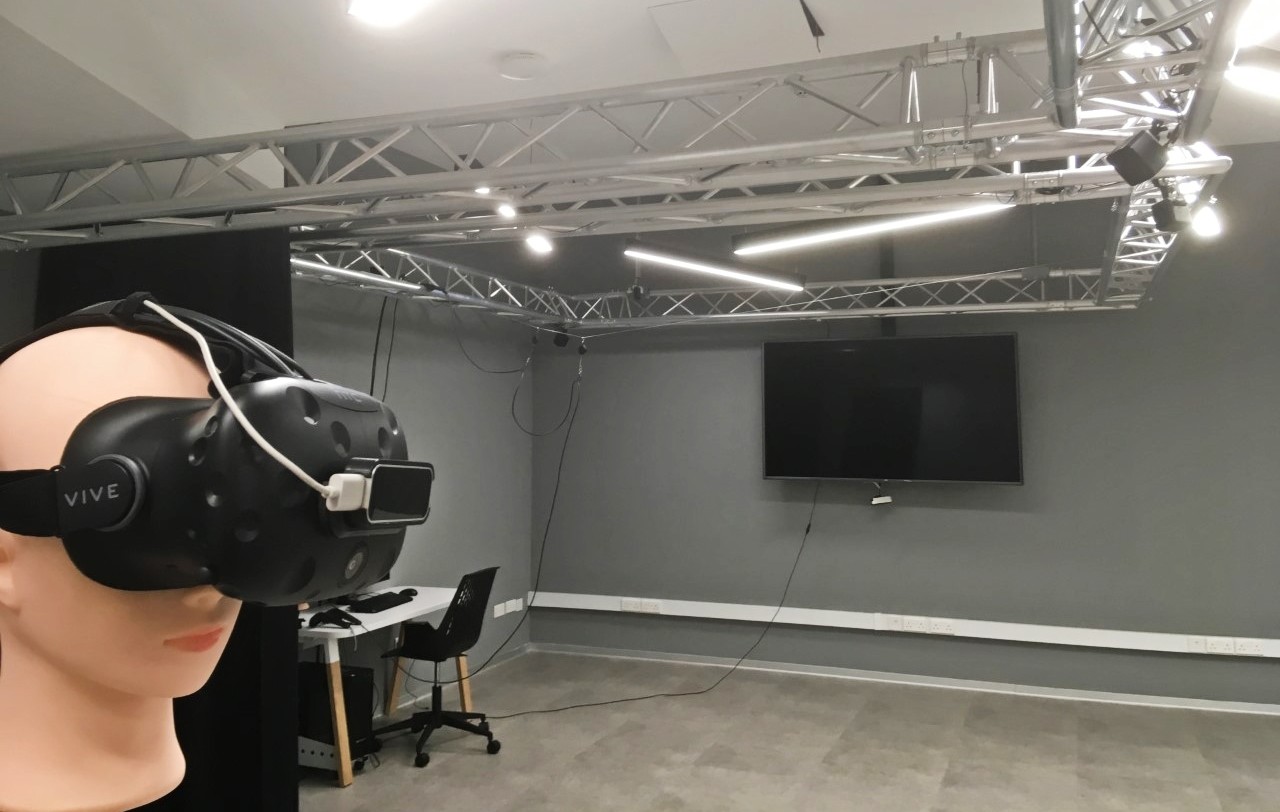VR Facility
The VR facility is intended to create interactive applications, including systems utilising immersive virtual reality and augmented and mixed reality. Specifically, the lab includes two purpose-built independent immersive VR arenas where two players can synchronously play games and interact with each other in a shared virtual space. Gameplay data is exchanged via low-latency local area network (LAN) connectivity. The VR facilities are supported by HTC Vive Head-Mounted Displays (HMDs) connected to independent Windows 10 workstations with powerful Nvidia GeForce RTX 2080Ti graphics processors. The HMDs support 6 degrees of freedom (position and orientation), and motion data is available across a maximum area of 4mx4m. The latter is facilitated by tracking base-stations mounted on ceiling supported trusses, which may also be used to install motion capture cameras. HMD users may, therefore, make natural walking/body movements within this restricted area. More considerable virtual distances must be traversed, this is facilitated by hand-held Vive controllers, which can also be used for interaction with virtual objects.
In addition to head tracking and hand tracking (via hand-held controllers), the lab also has several Vive Trackers, which can be strapped to the player’s legs to enable the player to see their leg movements. Alternatively, they may be screwed onto physical objects to allow these objects’ movements to be replicated in the virtual environment. Potential uses of the trackers include playing games with real physical objects, e.g. replica guns. For creating virtual hand-held weapons, the trackers also have a digital interface that allows users’ presses of triggers on the physical weapon to be initiated in the virtual environment. The HMDs may be combined with LEAP Motion Sensors, which are mounted on the front. The primary use of these motion trackers is to facilitate tracking the user’s hands and fingers. It can be used as a natural interaction interface for the manipulation of virtual objects and data. Other facilities at the ICT Lab include camera-based body and gesture tracking for interactive non-immersive applications (Microsoft Kinect, Orbbec Astra with Nuitrack body tracking middleware, Screen mounted LEAP Motion Sensors). In general, this technology is used to facilitate natural interaction with data presented on desktop or wall-mounted screens. Additionally, the technology includes several Arduino circuits boards and Raspberry Pi 3 (mini-PC) available to users and researchers to create interactive installations and test computer vision-assisted navigation algorithms for mobile mini-robots. Furthermore, the lab has multiple Android smartphones and tablets for touchscreen and augmented reality applications.


